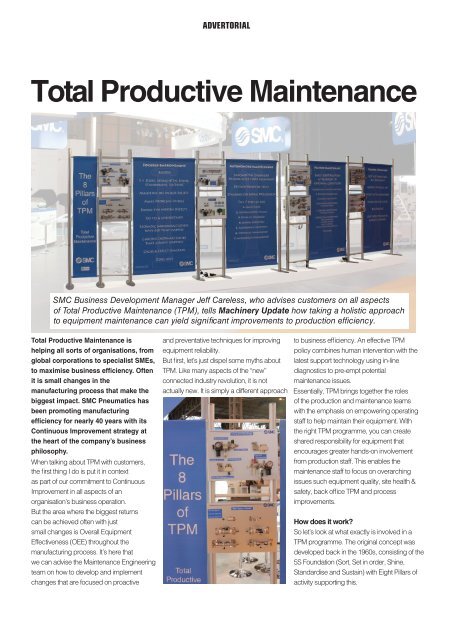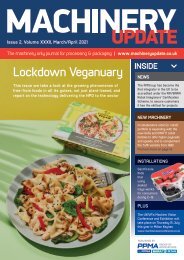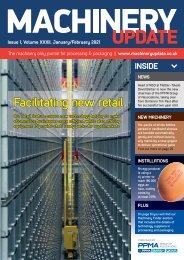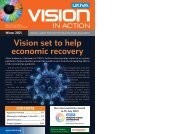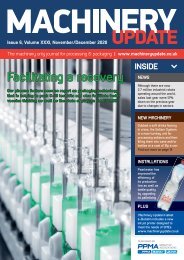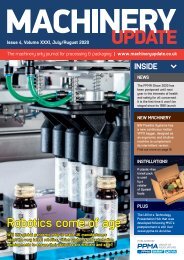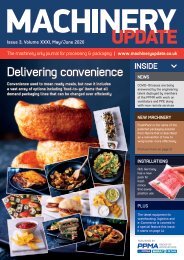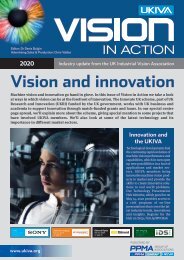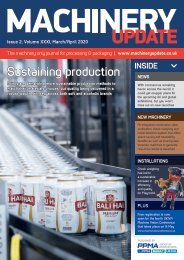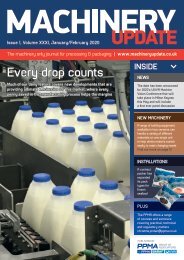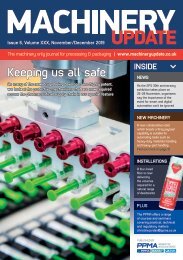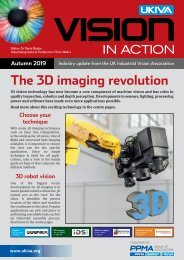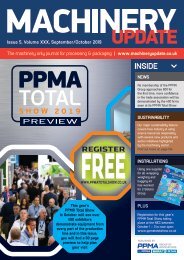MU 2017 November December
- No tags were found...
You also want an ePaper? Increase the reach of your titles
YUMPU automatically turns print PDFs into web optimized ePapers that Google loves.
ADVERTORIAL<br />
Total Productive Maintenance<br />
SMC Business Development Manager Jeff Careless, who advises customers on all aspects<br />
of Total Productive Maintenance (TPM), tells Machinery Update how taking a holistic approach<br />
to equipment maintenance can yield significant improvements to production efficiency.<br />
Total Productive Maintenance is<br />
helping all sorts of organisations, from<br />
global corporations to specialist SMEs,<br />
to maximise business efficiency. Often<br />
it is small changes in the<br />
manufacturing process that make the<br />
biggest impact. SMC Pneumatics has<br />
been promoting manufacturing<br />
efficiency for nearly 40 years with its<br />
Continuous Improvement strategy at<br />
the heart of the company’s business<br />
philosophy.<br />
When talking about TPM with customers,<br />
the first thing I do is put it in context<br />
as part of our commitment to Continuous<br />
Improvement in all aspects of an<br />
organisation’s business operation.<br />
But the area where the biggest returns<br />
can be achieved often with just<br />
small changes is Overall Equipment<br />
Effectiveness (OEE) throughout the<br />
manufacturing process. It’s here that<br />
we can advise the Maintenance Engineering<br />
team on how to develop and implement<br />
changes that are focused on proactive<br />
and preventative techniques for improving<br />
equipment reliability.<br />
But first, let’s just dispel some myths about<br />
TPM. Like many aspects of the “new”<br />
connected industry revolution, it is not<br />
actually new. It is simply a different approach<br />
to business efficiency. An effective TPM<br />
policy combines human intervention with the<br />
latest support technology using in-line<br />
diagnostics to pre-empt potential<br />
maintenance issues.<br />
Essentially, TPM brings together the roles<br />
of the production and maintenance teams<br />
with the emphasis on empowering operating<br />
staff to help maintain their equipment. With<br />
the right TPM programme, you can create<br />
shared responsibility for equipment that<br />
encourages greater hands-on involvement<br />
from production staff. This enables the<br />
maintenance staff to focus on overarching<br />
issues such equipment quality, site health &<br />
safety, back office TPM and process<br />
improvements.<br />
How does it work?<br />
So let’s look at what exactly is involved in a<br />
TPM programme. The original concept was<br />
developed back in the 1960s, consisting of the<br />
5S Foundation (Sort, Set in order, Shine,<br />
Standardise and Sustain) with Eight Pillars of<br />
activity supporting this.


